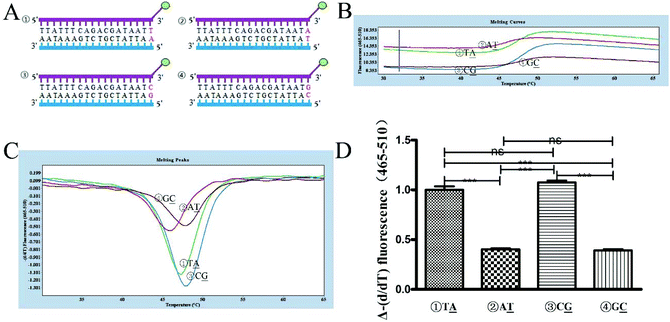 Open Access Article
Open Access ArticleCreative Commons Attribution 3.0 Unported Licence
Correction: The mechanism and regularity of quenching the effect of bases on fluorophores: the base-quenched probe method
Huihui
Mao
 ,
Guanghua
Luo
,
Guanghua
Luo
 *,
Yuxia
Zhan
*,
Yuxia
Zhan
 ,
Jun
Zhang
,
Jun
Zhang
 ,
Shuang
Yao
,
Shuang
Yao
 and
Yang
Yu
and
Yang
Yu

Comprehensive Laboratory, Changzhou Key Lab of Individualized Diagnosis and Treatment Associated with High Technology Research, the Third Affiliated Hospital of Soochow University, Changzhou 213003, China. E-mail: shineroar@163.com; Tel: +86 519 68870619
First published on 1st October 2018
Abstract
Correction for ‘The mechanism and regularity of quenching the effect of bases on fluorophores: the base-quenched probe method’ by Huihui Mao et al., Analyst, 2018, 143, 3292–3301.
The authors regret that the version of Fig. 6 which appeared in the original manuscript was incorrect, as two of the bars in part D were in the wrong position. The corrected version of Fig. 6 is presented below.
The Royal Society of Chemistry apologises for these errors and any consequent inconvenience to authors and readers.
| This journal is © The Royal Society of Chemistry 2018 |


![[A with combining low line]](https://www.rsc.org/images/entities/b_char_0041_0332.gif)
![[T with combining low line]](https://www.rsc.org/images/entities/b_char_0054_0332.gif)
![[G with combining low line]](https://www.rsc.org/images/entities/b_char_0047_0332.gif)
![[C with combining low line]](https://www.rsc.org/images/entities/b_char_0043_0332.gif)